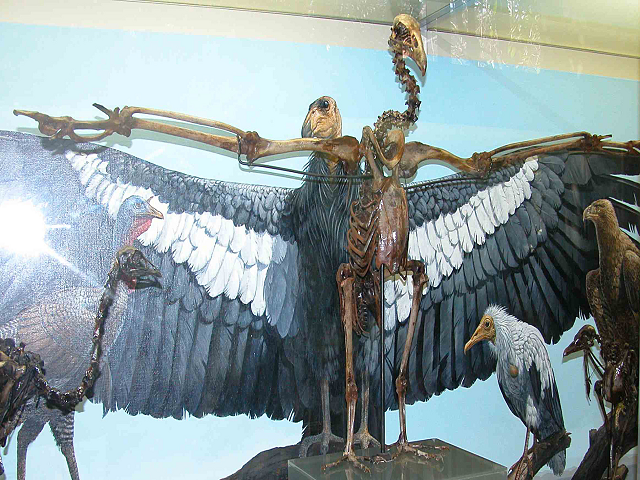Evolutionary Patterns in Late Quaternary California Condors
Keywords:
Condor, Pleistocene, La Brea Tar Pits, Holocene, Extinctions, DwarfingAbstract
Pleistocene fossils related to the living California condor (Gymnogyps californianus) have been found in several locations in western North America. Different authors have either assigned these to the species G. amplus or considered them a chronological subspecies of G. californianus. We examined the morphology of the genus Gymnogyps from the late Pleistocene to the present, using hundreds of specimens from the asphalt deposits of Rancho La Brea (RLB) and 62 partial modern skeletons. The limb bones (using seven variables on each element) and skulls (using 13 variables) were quantitatively compared using bivariate and multivariate techniques. No significant size or shape change through time was apparent in RLB samples ranging from the late Pleistocene (35,000 radiocarbon years b.p.) to the early Holocene (9000 radiocarbon years b.p.), suggesting evolutionary stasis in the face of the climatic changes of the last glacial-interglacial cycle. Proximal limb elements and skulls showed patterns of variation consistent with a species distinction between the RLB specimens and modern G. californianus. This confirms Fisher’s (1944) contention that the RLB species is referable to G. amplus Miller 1911, and not referable to the modern species. A set of specimens from a 9000-year-old Indian midden in Oregon as well as the presence of Gymnogyps in early Holocene Pit 10 at RLB suggest that the modern and ancient Gymnogyps may have coexisted with each other as well as with humans, and not died out or become dwarfed with the extinction of the rest of the Pleistocene megafauna, as suggested by some authors.





